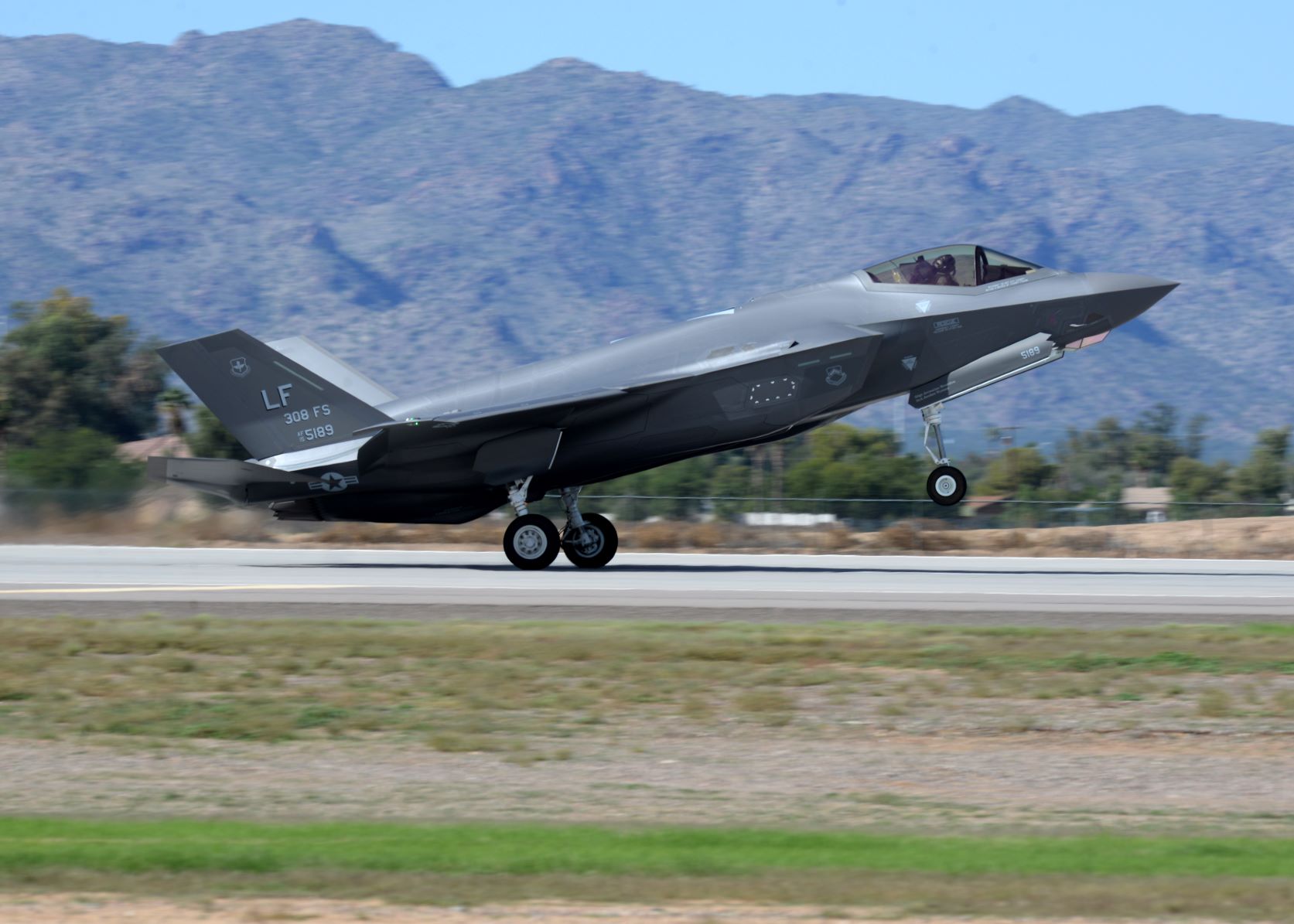
SHAH ALAM: Lightnings are cheaper than Super Bugs. The Lockheed Martin F-35A Lightning II is cheaper than the Boeing Super Hornet F/A-18E/F Super Hornet. It is likely that the Lightning being a single jet engine make it cheaper than the twin engine Super Hornet.
The lower price of the Lightning II became apparent in the notice issued by the US DSCA to Congress for the impending sale of both aircraft to Switzerland. Switzerland is looking to buy a new fighter to replace its 40-odd Hornet and F-5 Tiger IIs after a referendum narrowly voted in favour of the procurement recently.
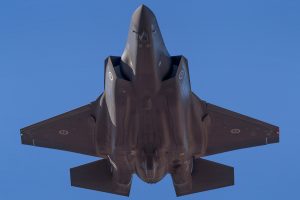
An F-35A Joint Strike Fighter flies over RAAF Base Richmond during circuit and instrument landing approach training. *** Local Caption *** Two F-35A Joint Strike Fighter aircraft from No. 3 Squadron conducted daylight flying training at RAAF Base Richmond. The training included circuit training and instrument landing approaches as part of pilot familiarisation.
The Lightning II is the CTOL version of the aircraft which is operated by the US Air Force, Royal Australian Air Force, JASDF and other NATO countries.
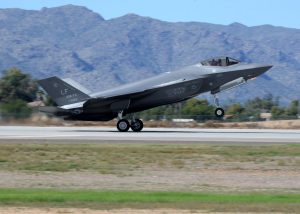
A USAF F-35A landing.
Several years ago Swiss voters said no to a purchase of some 40 Saab Gripen C/D fighters. This time around only the Lightning II, Super Hornet, Eurofighter Typhoon and the Dassault Rafale are being considered for purchase. The Gripen E/D were excluded from the process as the aircraft was not operationaly when the Swiss procurement agency conducted a comparative testing last year.
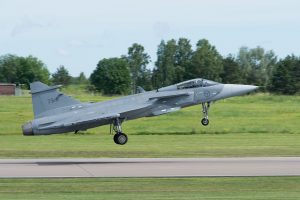
Gripen E takes off first time
From DSCA notice:
“WASHINGTON, September 30, 2020 – The State Department has made a determination approving a possible Foreign Military Sale to the Government of Switzerland of forty (40) F-35 Joint Strike Fighter aircraft and related equipment for an estimated cost of $6.58 billion. The Defense Security Cooperation Agency delivered the required certification notifying Congress of this possible sale today.
The Government of Switzerland requested to buy up to forty (40) F-35 Joint Strike Fighter Conventional Take Off and Landing (CTOL) aircraft; forty-six (46) Pratt & Whitney F-135 engines; forty (40) Sidewinder AIM-9X Block II+ (Plus) Tactical Missiles; fifty (50) Sidewinder AIM-9X Block II Captive Air Training Missiles (CATMs); six (6) Sidewinder AIM-9X Block II Special Air Training Missiles (NATMS); four (4) Sidewinder AIM-9X Block II Tactical Guidance Units; ten (10) Sidewinder AIM-9X Block II CATM Guidance Units; eighteen (18) KMU-572 JDAM Guidance Kits for GBU-54; twelve (12) Bomb MK-82 500LB, General Purpose; twelve (12) Bomb MK-82, Inert; twelve (12) GBU-53/B Small Diameter Bomb II (SDB II) All-Up Round (AUR); and eight (8) GBU-53/B SDB II Guided Test Vehicle (GTV). Also included are Electronic Warfare Systems; Command, Control, Communications, Computer and Intelligence/Communications, Navigational, and Identification (C4I/CNI); Autonomic Logistics Global Support System (ALGS); Autonomic Logistics Information System (ALIS); Full Mission Trainer; Weapons Employment Capability and other Subsystems, Features, and Capabilities; F‑35 unique infrared flares; reprogramming center access; F-35 Performance Based Logistics; software development/integration; flight test instrumentation; aircraft ferry and tanker support; Detector Laser DSU-38A/B, Detector Laser DSU-38A(D-2)/B, FMU-139D/B Fuze, KMU-572(D-2)/B Trainer (JDAM), 40 inch Wing Release Lanyard; GBU-53/B SDB II Weapon Load Crew Trainers (WLCT); Cartridge, 25 mm PGU-23/U; weapons containers; aircraft and munitions support and test equipment; communications equipment; spares and repair parts; repair and return support; personnel training and training equipment; publications and technical documents; U.S. Government and contractor engineering, technical, and logistics support services; and other related elements of logistical and program support. The total estimated cost is $6.58 billion.”
The Super Hornet one
WASHINGTON, September 30, 2020 – The State Department has made a determination approving a possible Foreign Military Sale to the Government of Switzerland of forty (40) F/A-18E/F Super Hornet aircraft and related equipment for an estimated cost of $7.452 billion. The Defense Security Cooperation Agency delivered the required certification notifying Congress of this possible sale today.
The Government of Switzerland has requested to buy up to thirty-six (36) F/A-18E Super Hornet aircraft; seventy-two (72) F414-GE-400 engines (installed); four (4) F/A-18F Super Hornet aircraft; eight (8) F414-GE-400 engines (installed); sixteen (16) F414-GE-400 engines (spares); forty-four (44) M61A2 20MM gun systems; twenty-five (25) Advanced Targeting Forward-Looking Infrared (ATFLIR)/other targeting pod; fifty-five (55) AN/ALR-67(V)3 Electric Warfare Countermeasures Receiving sets; fifty-five (55) AN/ALQ-214 Integrated Countermeasures systems; forty-eight (48) Multifunctional Information Distribution Systems – Joint Tactical Radio Systems (MIDS-JTRS); forty-eight (48) Joint Helmet Mounted Cueing Systems (JHMCS); two hundred sixty-four (264) LAU-127E/A guided missile launchers; forty-eight (48) AN/AYK-29 Distributed Targeting Processor – Networked (DTP-N); twenty-seven (27) Infrared Search and Track (IRST) systems; forty (40) AIM-9X Block II Sidewinder tactical missiles; fifty (50) AIM-9X Block II Sidewinder Captive Air Training Missiles (CATMs); six (6) AIM-9X Block II Sidewinder Special Air Training Missiles (NATMs); four (4) AIM-9X Block II Sidewinder tactical guidance units; ten (10) AIM-9X Block II Sidewinder CATM guidance units; eighteen (18) KMU-572 JDAM Guidance Kits for GBU-54; twelve (12) Bomb MK-82 500LB, General Purpose; twelve (12) Bomb MK-82, Inert; twelve (12) GBU-53/B Small Diameter Bomb II (SDB II) All-Up Round (AUR); and eight (8) GBU-53/B SDB II Guided Test Vehicle (GTV). Also included are AN/APG-79 Active Electronically Scanned Array (AESA) radars; High Speed Video Network (HSVN) Digital Video Recorder (HDVR); AN/AVS-9 Night Vision Goggles (NVG); AN/AVS-11 Night Vision Cueing Device (NVCD); AN/ALE-47 Electronic Warfare Countermeasures Systems; AN/ARC-210 Communication System; AN/APX-111 Combined Interrogator Transponder; AN/ALE-55 Towed Decoys; launchers (LAU-115D/A, LAU-116B/A, LAU118A); Training Aids, Devices and Spares; Technical Data Engineering Change Proposals; Avionics Software Support; Joint Mission Planning System (JMPS); Data Transfer Unit (DTU); Accurate Navigation (ANAV) Global Positioning System (GPS) Navigation; KIV-78 Dual Channel Encryptor, Identification Friend or Foe (IFF); Cartridge Actuated Devices/Propellant Actuated Devices (CADs/PADs); Technical Publications; AN/PYQ-10C Simple Key Loader (SKL); Aircraft Spares; other support equipment; Aircraft Armament Equipment (AAE); aircraft ferry; transportation costs; other technical assistance; engineering technical assistance; contractor engineering technical support; logistics technical assistance; Repair of Repairables (RoR); aircrew and maintenance training; contractor logistics support; flight test services; Foreign Liaison Officer (FLO) support; auxiliary fuel tanks, system integration and testing; software development/integration; and other related elements of logistics and program support. For AIM-9X: containers; missile support and test equipment; provisioning; spare and repair parts; personnel training and training equipment; publications and technical data; and U.S. Government and contractor technical assistance and other related logistics support. For GBU-53/B SDB II and GBU-54: Detector Laser DSU-38A/B, Detector Laser DSU-38A(D-2)/B, FMU-139D/B Fuze, KMU-572(D-2)/B Trainer (JDAM), 40-inch Wing Release Lanyard; GBU-53/B SDB II Weapon Load Crew Trainers (WLCT); weapons containers; munitions support and test equipment; spares and repair parts; repair and return support; personnel training and training equipment; publications and technical documents; U.S. Government and contractor engineering, technical, and logistics support services; and other related elements of logistical and program support. The total estimated cost is $7.452 billion.
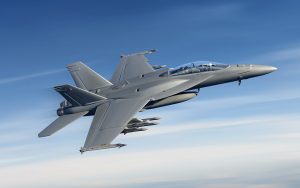
A Block III Super Hornet. Boeing.
Apart from the two fighter types, Switzerland has also been cleared to buy five Patriot Configuration-3+ Modernized Fire Units and related equipment for an estimated cost of $2.2 billion. The deal include up to seventy (70) Patriot MIM-104E Guidance Enhanced Missile Tactical (GEM-T) Missiles and the other related equipment.
–Malaysian Defence
If you like this post, buy me an espresso. Paypal Payment

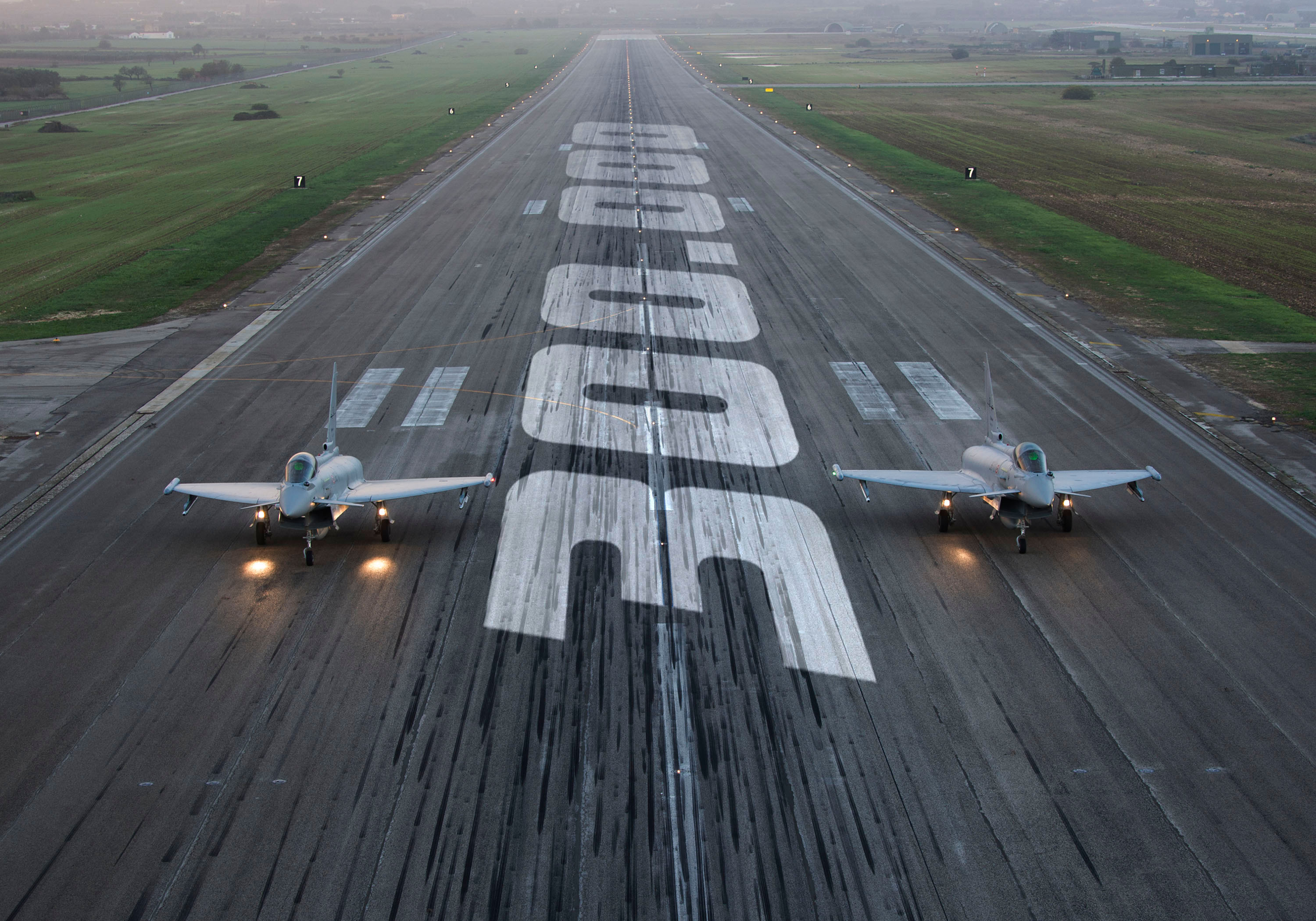
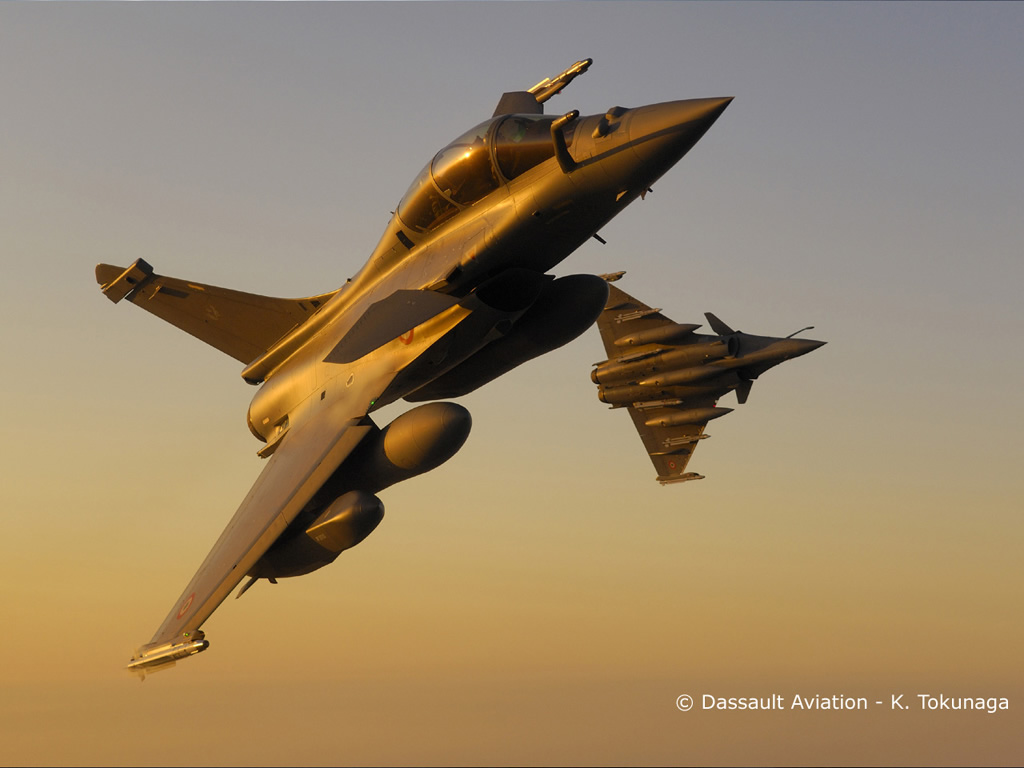
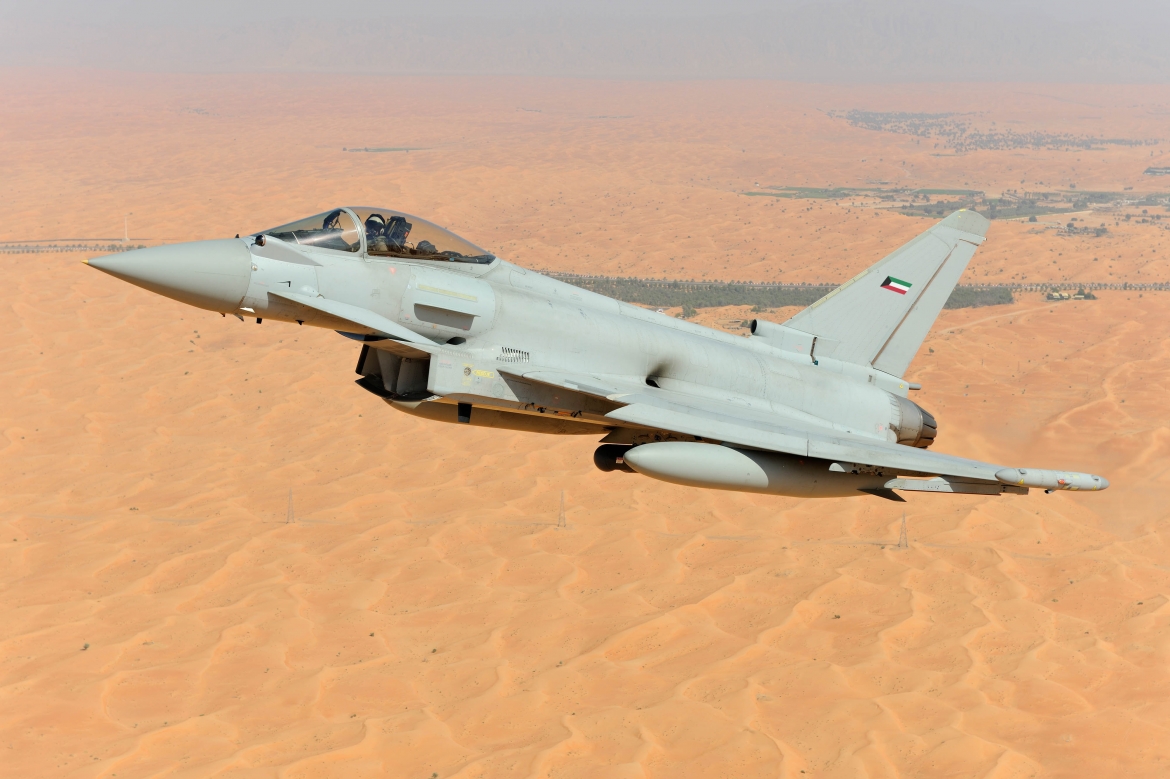
Not to mention the F-35A is way much more cheaper than Typhoons and Rafales.
For example Qatar contract for 24 Typhoon and 9 Hawk cost about USD6.6 billion
Also for Qatar, the contract for 24 Rafales cost USD6.9 billion
Why IMO we are so lucky not to buy those Rafales and Typhoons for MRCA a few years ago. Something i have talked before in the last few years. If we did, we will be stuck with uber expensive 4.5gen aircraft with no money for the next 20 years to get 5th gen aircrafts.
So can we afford those F-35A come 2030? I wish so, but the realist in me say that we would better off buying KF-X in numbers, as it is planned to be even cheaper than the F-35A.
The price of the F-35A quoted for Switzerland is like the entirety of TUDM development budget for 20 years!. No way we could afford more than a handful of them.
KFX ?. No not For malaysian. Better find a suitable one.
@…
Lucky we didn’t buy the Superbug either. For the same amount of money we could have rue our luck not to get F-35s instead.
@ safran
If the malaysian government want to, we are more than capable to be a major partner in the KF-X.
A major government to government deal with south korea involving LCA/LIFT (2021-2030) and KF-X (2031-2040) for TUDM; frigates for TLDM; OPVs for MMEA; APCs, ATGM and MANPADs for the Army while pushing korean companies (like samsung etc) to transfer their factories from china to Malaysia. A big win-win for both south korea and malaysia.
Hold up, I don’t understand something:
“forty (40) F-35 Joint Strike Fighter Conventional Take Off and Landing (CTOL) aircraft; forty-six (46) Pratt & Whitney F-135 engines”
So, (40) F-35A airframes only? (40) installed engines and (6) extra? OR (40) F-35A with engines preinstalled and (46) extra engines?
Below is even confusing to me,
“thirty-six (36) F/A-18E Super Hornet aircraft; seventy-two (72) F414-GE-400 engines (installed); four (4) F/A-18F Super Hornet aircraft; eight (8) F414-GE-400 engines (installed); sixteen (16) F414-GE-400 engines (spares)”
(36) F/A-18E with (36) installed engines, so (36) extra engines (72 engines total)?
(4) F/A-18F with (4) installed engines, so (4) extra engines (8 engines total)?
and then below, they have (16) spare engines as well?
Wait, what? I’m so lost…Sorry.
Reply
They always sell extra engines as spares.
@Safran
“KFX ?. No not For malaysian. Better find a suitable one.”
Such as?
KFX isn’t that bad on paper. Though there are critics that says it’s not fully 5th gen fighter, I personally think it’ll suffice. I would be glad of we can shift our focus to just these 3 countries in terms of the military procurement; Turkey, Sweden and South Korea, but that’s just me though.
…..,
Is korean Goverment wants to coperate with malaysia for KFX. Nope, i don’t think so. Any Korean Design to be honest are not in good Qualities. Again find a suitable one
@ Safran
Korean design not good? So what is good, french?
http://www.thedrive.com/the-war-zone/36177/photos-show-south-koreas-next-generation-fighter-jet-rapidly-taking-shape
http://www.nst.com.my/news/nation/2019/11/541857/malaysia-keen-s-korean-indigenous-fighter-jet-programme
http://www.theborneopost.com/2019/11/25/malaysia-shows-interest-in-south-koreas-advancement-in-aerospace/
http://aagth1.blogspot.com/2019/10/kai-kf-x.html
http://worldwardefence.blogspot.com/2019/10/kai-open-to-additional-foreign-partners.html
http://1.bp.blogspot.com/-07GgktOov4M/Xa22rr3PuvI/AAAAAAABINo/RDoy47VmQUw0oBiBuMShGyXhBQtq9xqJwCLcBGAsYHQ/s1600/ehe8arguyaagslp.jpg
Off topic
http://www.nst.com.my/news/nation/2020/10/628971/they-were-air-force-officers-born-hard-times
Should be a great read when it is published.
@shrug
DSCA announcements list the installed engines and spare engines separately. Usually only few spares are needed.
@…
The KFX is heavily based on British fighter avionics and US engines, so UK and US will have a big say in who it can sell to. So far it seems Indonesia has cleared though so who knows.
It’s also not quite a 5th gen plane as the first variant will not have internal launch bays. That will have very significant effect on its low obs profile. You will remember the big to-do over F35 external carriage.
@…
Well his username is Safran, so it has to be French. Haha 😀
@¯\_( ツ)_/¯
F18 is twin engined, so 72 engines installed in 36 air frames. 16 engines installed in 8 airframes with a few extra for spares.
@Safran
“KFX ?. No not For malaysian. Better find a suitable one.”
“Is korean Goverment wants to coperate with malaysia for KFX. Nope, i don’t think so. Any Korean Design to be honest are not in good Qualities. Again find a suitable one”
Do you mind to elaborate more? It doesn’t sound convincing to many of us
Forget about KFX, think twice on F35, consider on TFX but save money for 6th Generation Fighter..
KFX isn’t a full 5th gen fighter (at least not yet atm). I don’t see it wise to throw money into this project just for a mere 4.5 gen plane when I could buy other 4.5 gens with far more proven track record.
And if I had to spend that much money buying a 4.5 gen plane be it Super Hornet, Typhoon or Rafale, I might as well go straight up for F-35s and even save some money on that!
KFX will be for the 1st batch delivered with a reduced stealth capability without internal weapons carriage. The internal weapons bay is there but will be blanked-off for the 1st batch.
This is to reduce the development risk (a good decision on the korean side) and enabling the koreans to field the aircraft by 2028.
The development will continue with the full stealth capability (this will be mostly flying sorties to test weapons release and launch from the internal weapons bay) , and will later be retrofitted to the whole fleet.
IMO this is one of the main advantage of the koreans, knowing their limits, and planning a realistic and executable plan.
Something IMO that is lacking on many projects like the malaysian LCS and the notorious indian LCA project.
@ fadiman
Do you even know what the TF-X will be??? Pakai petik je TF-X tapi bukannya tahu pon apa dia TF-X tu.
TF-X is designed to be a large air superiority fighter that will be even bigger than the F-15 and F-22 (the KF-X is purposely designed as a cheaper alternative to the F-35). The prototype will use 2x F-16 engines. Yes Turkey has invited malaysia to join the programme, but in reality the TF-X will be an aircraft that will be much more expensive than the F-35, something we surely cannot afford.
http://www.defenceturkey.com/en/content/a-look-at-current-status-of-turkish-mmu-tf-x-program-4129
Anyway on the generations
4th gen aircraft came into service in the mid 70s
5th gen in the 2020s
6th gen is probably in the 2050s and nobody knows what is 6th gen anyway.
@…
“Generations” are marketing speak anyway, but just useful as shorthand rather than going into details
6th gen is going to be lasers and drone swarms, mark my words
Anyway… TFX is either going to become another Rooivalk, or praying for Russkies or Chinese to save them.
KFX is going to come out with a budget Rafale first iteration, and then we’ll see if anything concrete happens afterward. The program might end up another Lavi – ultimately more expensive than imports.
@…
“If the malaysian government want to, we are more than capable to be a major partner in the KF-X.”
Err…sadly my has no capability.
“KFX will be for the 1st batch delivered with a reduced stealth capability without internal weapons……….”
Actually the final design of KFX was heavily influenced by indons requirements. The Korea preffered a single engine, short leg with weapon internal bay (WIB) just as F35. When indons joined the project, they required a long leg fighter due to their vast teritory. The KFX design was revised. The KFX adopt 2 engines design and the WIB was altered so the KFX can carry more fuel.
@Chua
“The KFX is heavily based on British fighter avionics and US engines, so UK and US will have a big say….”
Indeed…the US rejection to give tech transfer on certain tech which is installed on IFX (indon KFX) pushed Korea-Indon to renegotiate and indon stalled the payment. The Korea has no other way than talk to their indon partner. Indon already know KFX more than too much.
@ Lukman Hakim
“Do you mind to elaborate more? It doesn’t sound convincing to many of us”
MY has no facility, skill and experience in producing plane.
@\_( ツ)_/¯
““It’s also not quite a 5th gen plane..
No, KFX use US tech. The US wont allow the KFX better than F35
@ chua
Koreans are masters of getting lots of capability with low cost.
@ romeo
You have no idea what kind of aerospace capability that we currently have.
So, don’t think so much, just get the ex-Kuwaiti Legacy Hornet, upgrade it and at least for 10 or 15 years..
@fadiman
Exactly! All this talk about getting MRCAs and sufficient LCAs is just empty talk, no commitment whatsoever. Better to focus on getting what we can really afford which are used stuff. We cannot wait for Kuwait to release their Hornets first then we come buy, that’s too late! We should start to work our diplomacy right now and secure the numbers we wanted way ahead before they come on sale.
Anyone that wants to buy the best kept & most desirable Kastam/JPJ lelong cars knows to pull cable way ahead of auction day. The same goes with Kuwaiti Hornets. We have to pull cable right now! Can our Armed Forces stop dreaming about getting everything brand new handed on a gold plate?!
@…
Unproven equipment though. And as I said before, if the base source for their tech is last gen Russian and US equipment, no way you’re getting the latest gear.
@ chua
Koreans are a developed nation on its own, the raybolt for example is much more advanced than the javelin.
As the KF-X is intended to be a cheaper aircraft than the F-35, it is expected that the aircraft is less advanced than the F-35.
I like Joe’s comments. Talking up the wall on F35 or Super Bugs aren’t getting us anywhere. MinDef and TUDM need to immediately get cracking and check on the availability and viability of ex Kuwaiti Hornets. Same goes with the hee haw on frigate buys. Get the LCS going again either with the current form and shipyard or on with another! We have been had. And as they say in Malay, ‘Luncai terjun dengan labu-labunya’. Period.
The Kuwaiti hornets would add to our fighter capability for sure. But will be available only around 2023 the earliest.
In all probability it will not be available for free.
And it will only be good to be used for only 10 years at best.
Getting more of the hornets will not solve our problem of not flying our fighters frequently and standing up a permanent Quick Reaction Alert mission, as the hornets have high operating costs.
For now our immediate need is to have fighters in numbers that we can fly frequently, doing regular air patrols and undertake urgent QRA scramble in both east and west malaysia.
I am formerly for getting additional hornets. If and only if we can get them now. Getting them after 2023 is too late IMO (which is why canada went for the aussie hornets, i had also suggested to take aussie hornets too but now all of them is no more and has been sold to a private buyer in USA) and will drain what little budget that we have.
I would rather have more LCA/LIFT in the from of the FA-50, getting as many as we can to have 2 full squadrons in both kuantan and labuan, in addition to training units.
@…
Canada went for Aussie Hornets because they became available earlier, it doesn’t mean they had given up on the Kuwaiti Hornets. Canada are still pursuing them. That is why we gotta to start lobbying to be the preferred buyer for those we wanted, the far lesser D variant.
Between now and 3 years later is such a short timespan. Once we got our hands on the Hornets, a brief period of familiarisation with their older system and we’re good to go.
How many likely LCA planes can we get by 2023? How long would it take to familiarise with everything new on LCA? How long will the mission planners need to replan to consider the strengths & weaknesses and performance envelope of the LCA? All these are big question marks as compared to what we know can be done by adding 8 or more Hornets.
@ joe
Canada isn’t going to add more hornets. Those hornets added from Australia is to maintain the current canadian capability by having extra airframes to cycle through maintenance, not to add more capability. So they don’t need to add extra manpower, infrastructure to support those Australian hornets.
http://www.canada.ca/en/department-national-defence/services/procurement/fighter-jets/future-fighter-capability-project.html
Canada is in the process to select a new fighter. Most probably they will start getting new fighters before we restart our own MRCA programme.
We on the other hand need to add extra capability.
Do we have the operational budget to operate and fly additional hornets for QRA and daily air patrols in both east and west malaysia?
What percentage of our meagre budget would the used hornets would consume?
Is it worthwhile to spend that amount to have a capability that is to be retired after just 10 years?
FA-50 has lower operating costs than even the gripen. Hornets costs double the gripen operating costs.
http://www.defenceweb.co.za/aerospace/aerospace-aerospace/kai-promoting-fa-50-in-botswana/
http://www.defenseworld.net/news/20375/South_Korea_Offers_Botswana_FA_50_Fighter_Jet_As_Cheaper_Alternative_To_Sweden_s_Gripen#.X3lZdB7miNw
@…
“the raybolt for example is much more advanced than the javelin.
As the KF-X is intended to be a cheaper aircraft than the F-35, it is expected that the aircraft is less advanced than the F-35.”
I believe both statements are a little over-enthusiastic. But we’ve been down this road.
@…
“For now our immediate need is to have fighters in numbers that we can fly frequently, doing regular air patrols and undertake urgent QRA scramble in both east and west malaysia.”
I agree with this.
@ chua
Yes we have been down this road, and I still believe that the raybolt is the best ATGM out there, or at least much more superior than the Javelin. KF-X will not be a fighter more expensive than the F-35.
raybolt
– later development than the javelin
– lightweight (13kg vs 20++kg javelin)
– low cost (nearly half of the javelin)
– advanced uncooled CCD EO that can be used as a surveillance tool, switched on for long periods of time, unlike cryogenic cooled javelin targeting system that can be only used for a short period of time before a new cryogenic pod need to be fitted.
http://m.blog.naver.com/hwangyu9/221993005488
KF-X. All the “it will be expensive” write up comes from a single white man, david axe. I would prefer information from the koreans themselves. The target price for a production KF-X is 80 billion won, or around USD68 million.
http://mnews.joins.com/amparticle/23588316
@…
Thank you for the link. I will comment on the article as well as your summary of points:
raybolt
– later development than the javelin
The article seems to hint that it’s a development of Spike with Korean add-ons. Javelin is receiving upgrades however which should bring it up to par or more by 2022, including enhanced networking, lightweight CLU, GPS targeting and increase of effective range to 4.5km.
That is one of the advantages of buying a weapon with a large user base and R&D funded by several rich countries. What’s the upgrade path for Raybolt?
– lightweight (13kg vs 20++kg javelin)
The article states that the system is 5kg lighter than Javelin, so that should be about 17kg. 13kg is the missile only minus CLU.
– low cost (nearly half of the javelin)
A third according to the article, but the Javelin price quoted by the article is too expensive even by contract costs inclusive of support and training. Likewise is it uncertain of the Raybolt quoted cost is for the missile alone or inclusive of the CLU and certainly the contract cost would be more expensive.
– advanced uncooled CCD EO that can be used as a surveillance tool
Javelin Lightweight CLU will probably have the same ability, plus other goodies as stated above.
David Axe is an a-hole but his costing of the KFX is not wrong. The program costs have already pushed the KFX into 100+ million dollar territory. Of course if the Korean Govt decides to eat the program costs, well and good. If not, well…
@ chua
Still the raybolt is not “last generation” stuff that you always say it is. Javelin unless it is upgraded in 2022 is less capable than the raybolt. Korean electronic prowess gets high tech EO targeting system with low build cost. Overall the javelin will still be much more expensive, and it does not have the unique twin launcher system the raybolt has.
http://1.bp.blogspot.com/-sLLNrD7Nqmc/X3Ug1TvpmCI/AAAAAAABPlA/UAC9tCuTkKoeGckTGuBcujQaqkCXc8gdgCLcBGAsYHQ/s2048/AGM-114%2BHellfire%2BFGM-148%2BJavelin%2BSpike%2Bdata%2B%25E0%25B8%2597%25E0%25B8%259A-1.jpg
http://pds21.egloos.com/pds/201809/28/60/f0205060_5badab2375bf5.jpg
Getting F-35 will have another concern. In service support. South korean air force leaders have fumed that there is so many restrictions on its personnel even touching the aircraft that they wonder if those F-35 are even theirs. KF-X, although having US components (like super hornet engines), does not have sensitive US technology (almost all KF-X electronics are non US) so it will be easier to maintain.
… “Korean electronic prowess gets high tech EO targeting system with low build cost.”
It’s not simply a matter of Korea having better technology. The Raybolt was fielded 21 years after the Javelin, after all, so it would have some advantages. Javelin is getting an updated CLU that will also be lighter and longer ranged than the current Javelin and Raybolt.
… “lightweight (13kg vs 20++kg javelin)”
Javelin as a system is indeed 22.3kg There’s a paywall figure for Raybolt’s weight at “about 20kg” but the 13kg figure is for the missile only.
… “low cost (nearly half of the javelin)”
A wikipedia figure put Raybout at 100 billion won per round which is $86K today. The US Army most recently bought Javelin at $143-175K per round.
… “Getting F-35 will have another concern. In service support. South korean air force leaders have fumed that there is so many restrictions on its personnel even touching the aircraft that they wonder if those F-35 are even theirs.”
In the unlikely event that we operate a cutting edge aircraft, we would do well to implement the same restrictions. Of course, this is not a reason for us not to operate a cutting edge aircraft.
… “http://mnews.joins.com/amparticle/23588316”
The article mentions there is some Israeli content in the AESA radar.
Chua “Of course if the Korean Govt decides to eat the program costs, well and good. If not, well…”
They will have to, and it doesn’t help that Indonesia does not want to pay up.
http://www.koreaherald.com/view.php?ud=20200922000866
@ AM
The article mentions there is some Israeli content in the AESA radar.
Israeli knowhow and help with technology transfer. But to be 100% build in Korea. Even Super Hornets, and F-35 has plenty of Israeli components. Kuwaiti new suoer hornets specifically has an elbit wide angle HUD and Sniper targeting pods. Our current F/A-18D has israeli tech JHMCS HMD too. Not to mention the ADM-141 TALD.
@AM
“They will have to, and it doesn’t help that Indonesia does not want to pay up.
http://www.koreaherald.com/view.php?ud=20200922000866”
Indeed….The Indonesians will not pay whay they didnt get
Even Indonesia asking to buy F35 rather than F16V offered by US in seeking ToT for some tech installed in IFX (The Korean did). Unfortunately the US still rejects it considering objection from SG and OZ. Buying Austria troubled typhoon which will be a lot cheaper is more logic than accepting US offer F16V.
Buying FA-50 LCA for RMAF is a good decision. There are Indonesia,Thai and Phi already operated it. They all seem like it. If RMAF will not buy used hornet then they have to able to maintain ciksu and hornet operational readiness above 75% always. As the fighter is getting older it will be more difficult.
Next, RMAF could get KFX for the second MRCA.
Although KFX will less capable (max on par) than F35 is still the best option than buying all others existing 4.5 gen fighter. The other fighter cant reach 5 gen fighter but the KFX can. The KFX design alone already has RCS 0.1 while F35 has 0.01 due to material used in F35.
romeo “Indeed….The Indonesians will not pay whay they didnt get”
Please explain. What are they supposed to get from Korea that they are not getting?
romeo “Buying Austria troubled typhoon which will be a lot cheaper is more logic than accepting US offer F16V.”
Used, early model Typhoons may look good to you.
Until you consider that they “lack of certain critical capabilities — including the PIRATE infrared sensor, a helmet-mounted display, and the EuroDASS self-defense suite. At the same time, the Austrian jets have no beyond-visual-range air-to-air missile and lack any air-to-ground capability.”
The Typhoon is not cheap to operate (the reason Austria is offloading them) and Indonesia will have to set up an infrastructure to support them, whereas they already have one for F-16s and are performing an upgrade locally.
They might want to look at used Israeli F-16s. Israel retired the F-16A/B (which Indonesia also operates) and still has the aircraft. Last week they closed an F-16C/D squadron. Lack of official ties did not prevent them from buying used Skyhawks from Israel.
TA/FA-50 + KF-X is not a bad combo for the future I think. We can retire all of our legacy fighters. But we can’t do jack of anything if we’re only having palm oil barter as a payment system.